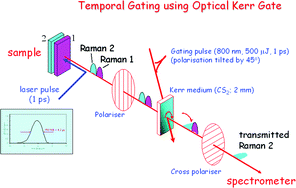Depth profiling of calcifications in breast tissue using picosecond Kerr-gated Raman spectroscopy
Abstract
Breast calcifications are found in both benign and malignant lesions and their composition can indicate the disease state.

Maintenance work is planned for Wednesday 1st May 2024 from 9:00am to 11:00am (BST).
During this time, the performance of our website may be affected - searches may run slowly and some pages may be temporarily unavailable. If this happens, please try refreshing your web browser or try waiting two to three minutes before trying again.
We apologise for any inconvenience this might cause and thank you for your patience.
* Corresponding authors
a
Biophotonics Research Group, Gloucestershire Royal Hospital, Great Western Road, Gloucester, UK
E-mail:
n.stone@medical-research-centre.com
Fax: 01452 395713
Tel: 01452 395712
b Central Laser Facility, CCLRC Rutherford Appleton Laboratory, Didcot, Oxfordshire, UK
c Cranfield University, Royal Military College of Science, Shrivenham, Swindon, UK
Breast calcifications are found in both benign and malignant lesions and their composition can indicate the disease state.

 Please wait while we load your content...
Something went wrong. Try again?
Please wait while we load your content...
Something went wrong. Try again?
R. Baker, P. Matousek, K. L. Ronayne, A. W. Parker, K. Rogers and N. Stone, Analyst, 2007, 132, 48 DOI: 10.1039/B614388A
To request permission to reproduce material from this article, please go to the Copyright Clearance Center request page.
If you are an author contributing to an RSC publication, you do not need to request permission provided correct acknowledgement is given.
If you are the author of this article, you do not need to request permission to reproduce figures and diagrams provided correct acknowledgement is given. If you want to reproduce the whole article in a third-party publication (excluding your thesis/dissertation for which permission is not required) please go to the Copyright Clearance Center request page.
Read more about how to correctly acknowledge RSC content.
 Fetching data from CrossRef.
Fetching data from CrossRef.
This may take some time to load.
Loading related content
